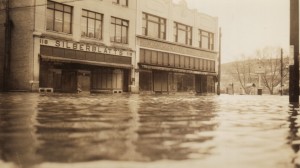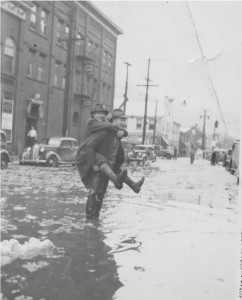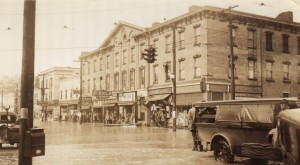
March is the month of floods for residents of Western Pennsylvania. The Leader Times, February 28, 1956 mentioned that since 1762, the Pittsburgh district encountered 116 floods. Of those, 30 occurred during the month of March. The record flood has become known as the “The Great St. Patrick’s Day Flood”. For several days in March of 1936, residents used boats and rafts to maneuver the streets of Kittanning in what created a look more like Vienna, Italy.




The flood took the lives of more than 60 people and injured over 500. The devastation shaped the flood control program that is followed today. For years, legislation and rumors had circulated in the House of Representative’s to enact some sort of flood control and flood relief. Ironically, while Pittsburgh and Kittanning, along with many other towns in Western Pennsylvania were fighting the rising waters, Congress was enacting Flood Control Act. According to the U. S. Army Corps of Engineers, the act saved nearly $11 billion in flood damage.



Kittanning has seen is share of flooding since 1936, but for those that lived through the St. Patrick’s Day Flood in 1936, there has never been a flood so severe. Even as this article was in preparation, residents along the Allegheny River and its tributaries were monitoring the rising waters in hopes that would not extent over their banks.


Credits:
THE LEADER TIMES, February 28, 1956
TRIBUNE-REVIEW, Sunday, March 16, 2008
Burns, Daniel. Pittsburgh’s Rivers (Chicago: Arcadia Publishing, 2006)
Flaherty, Mildred. The Great Saint Patrick’s Day Flood (Pittsburgh: The Local History Company, 2004
Photographs from the collections of Roger Stone and William Gordon Baum

